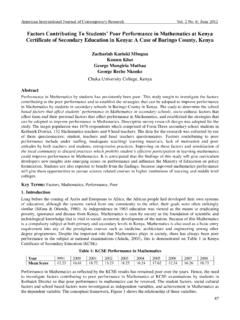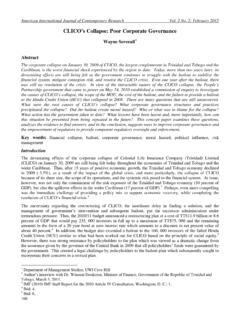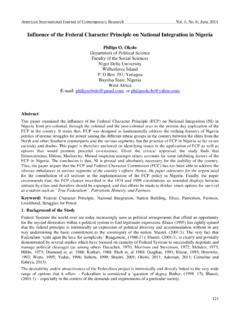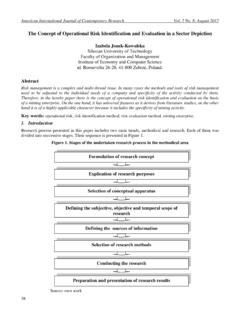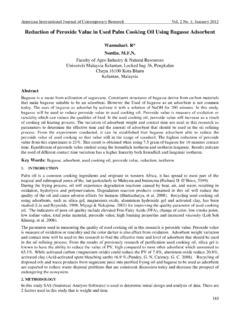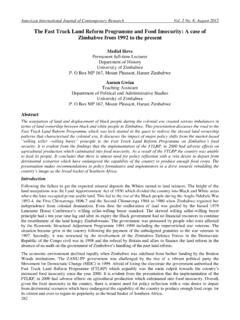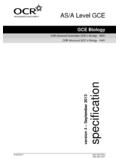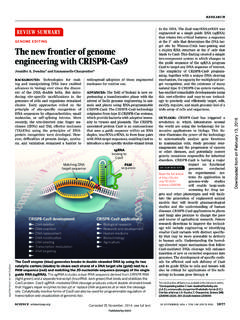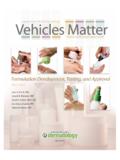Transcription of Tracer Study of PNU Graduates - aijcrnet.com
1 American International Journal of Contemporary Research Vol. 4 No. 3; March 2014 81 Tracer Study of PNU Graduates Prof. Adelaida C. Gines, Philippine Normal University Taft Avenue cor. Ayala Blvd, Manila, Philippines Abstract Undoubtedly, Tracer Study results is a powerful tool which documented the employment characteristics, transition to employment and the level of satisfaction of the PNU Graduates of 2009-2011 in terms of the level of satisfaction of the University services, learning environment and facilities. It also looked into the skills and competencies of the different bachelors degree programs in teacher education provided during the pre-service training if these existing programs were still effective, adequate and relevant in responding to the rapid and complex changes as brought about by emerging developments such as the international standards in academic programs, the upcoming ASEAN 2015 integration, the Competency Framework of South East Asian (SEA) Teachers in the 21st Century, among others.
2 Keywords: Tracer Study , PNU Graduates , Teacher Education Introduction In addressing the emerging and complex nature and challenges of the 21st century, higher education stands out as one of the major keys to cope with reforms. Through its essential functions of instruction, research, extension and production, higher education makes-up a vital and strategic part in development. Moreover, Executive Order # 83, series of 2012 establishes the Philippine Qualifications Framework, which mandates agency responsibilities like DepEd, CHED, TESDA, PRC and DOLE to review learning standards in basic education, technical skills development and higher education and in the alignment of licensure examination. Earlier, in the 2011 State of the Nation Address (SONA) of President Aquino, as quoted .. ngayon pa lang, nagtatagpo na ang kaisipan ng DOLE, CHED, TESDA at DepEd upang tugunan ang isyu ng job mismatch, susuriin ang mga curriculum para maituon sa mga industriyang naghahanap ng empleyado, at gagabayan ang mga estudyante sa pagpili ng mga kursong hitik sa bakanteng trabaho.
3 The Commission on Higher Education was created with a vision to become the key leader of the Philippine higher education system to work effectively in partnership with the major higher education stakeholders in building the country s human capital and innovation capacity toward the development of a Filipino nation. This, in effect, mandates CHED to promote relevant, efficient and quality higher education. On Tracer Studies The ILO Thesaurus 2005 defines a Tracer Study as an assessment tool where the impact on target groups is traced back to specific elements of a project or programme so that effective and ineffective project components may be defined. Further, Schomburg (2003, p. 6) shares that graduate survey results are important for analysis of relationship between higher education and work. Moreover, Millington (2001) states that they provide quantitative structural data on employment and career, the character of work and related competencies, and information on the professional orientation, and experiences of their Graduates .
4 Additionally, the collected data is an important indicator of the quality of higher education. In the Philippines, the Commission on Higher Education requires all HEIs to conduct a Tracer Study and is equally reflected as one of the required documents by any higher education accrediting body such as the Accrediting Agency of Chartered Colleges and Universities in the Philippines (AACCUP), Inc. By conducting a survey on the cohort of Graduates from a specific institution, profession, discipline, level of education, their employment characteristics, competencies and skills development, and have a comparative analysis, the information gained from these can be used by the graduate s alma mater and other education stakeholders for curriculum development and other emerging reforms. Center for Promoting Ideas, USA 82 Finally, INCHER-Kassel, Germany, believes that Tracer Study data offers the Career Service and the Study counseling insights about Study and professional careers that they can pass on to the students.
5 The Philippine Normal University The Philippine Normal University, the National Center for Teacher Education by virtue of 9647, the only specialized Teacher Education University offering a variety of at least 26 undergraduate specializations and 46 graduate academic programs and established as the first higher education institution on September 1, 1901, realizes its mandate to take the lead in teacher education in terms of curricular development and research, pre-service and in-service training programs and education leadership. The University conducts this evaluation of the impact of Teacher Education on the Graduates as one of its research priorities. This shows PNU s accountability to its stakeholders. Part of this is PNU s current initiatives to revise, improve and develop the program it offers and to have an initial basis for the development of a new teacher education curriculum considering the development in the implementation of the K-12 enhanced basic education curriculum of DepEd.
6 Moreover, it intends to determine if the curricular programs are being implemented appropriately at the classroom level and if it is eliciting the desired effect on student achievement and employability. As a means of curriculum evaluation, Tracer studies also help identify curriculum weaknesses and strengths. Some judgments about what aspects of the curriculum can be retained, enhanced or written off can be made if there is an evaluation data on which such decisions are based. Moreover, Tracer studies according to Garcia (2003) as cited by Gines (2004) pointed out that Tracer studies is an important source of information to know what happened to Graduates of academic programs in Higher Education Institutions (HEIs). Further findings of Tracer studies can be used to define/redefine HEIs mission and market niche and show how academic programs and course offering can be adjusted to reflect institutional goals.
7 Findings can also be used by stakeholders in deciding where to look for skills. Lastly, the evaluation shall provide a basis for further improving existing and or developing a new teacher education curriculum and implementation process. It is in this context that after the approval of the curriculum in April 2005 and its implementation in June of the same year, a Tracer Study was conducted to these undergraduate batches of Graduates (2009, 2010 and 2011) to provide data for the review and evaluation of the curricular programs of PNU. Specifically, the Study is designed to 1. Establish the profile of the PNU Graduates in terms of (a) Employment Characteristics and (b) Transition to Employment 2. Assess the Graduates level of satisfaction with the university s services, learning environment and facilities 3. Determine the extent to which the various curricular programs contributed to the development of the Graduates (a) communication skills; (b) human relations skills; c) leadership skills; (d) problem solving skills; and (e) research skills 4.
8 Assess the degree of effectiveness, adequacy and relevance of the University s curricular programs Graduates of PNU Curricular programs Figure 1: Conceptual Framework of the Study Figure 1 refers to the graphical conceptual framework of the Study . The curricular programs refer to the pre-service training and experiences of the PNU Graduates in the thirteen (13) undergraduate specialization programs, namely: 1) BSE Mathematics, 2) BS Mathematics for Teachers, 3) BSE Biology, 4) BS Biology for Teachers, 5) BS Physics for Teachers, 6) BS Library Information Science, 7) BSE Filipino, 8) BSE in Speech and Theater Arts, 9) BSE Music Education, 10) BSE Physical Education, 11) BSE History, 12) BSE in Values Education, and 13) Bachelor in Elementary Education (BEEd). Each of these programs has a minimum of 63 units of General Education, 54 units of Professional Education and 57 units of specialization.
9 Curricular Programs (Pre-service training and experiences in PNU) Employment characteristics, competency and skills development American International Journal of Contemporary Research Vol. 4 No. 3; March 2014 83 All have a one quarter or two (2) months of practice teaching in-campus and off-campus. The framework suggests that services, learning environment, facilities and the Graduates competencies (knowledge, skill and attitude) in their specializations and other competencies such as communication skills, human relations skills, leadership skills and research skills are reflected in the assessment of employment characteristics, adequacy and relevance of graduate competence and other skills, as acquired at PNU and needed in the workplace. Such feedbacks are necessary to determine the impact of the 13 curricular programs, which could provide information needed, to reform the existing programs and bring about appropriate fit between requirements of the world of work and the offerings of the University (Millington, 2001).
10 Methodology Research Design This Study used the descriptive survey covering the employment characteristics and transition to employment of the PNU Graduates . It is, in part a curricular product evaluation that documented curricular effectiveness, relevance and adequacy by determining how well the product (the Graduates ) has achieved the goal of their respective programs, the 13 academic undergraduate bachelors programs. Respondents and Sampling Plan This Study was initially designed to obtain both qualitative and quantitative data for the Graduates of the 26 programs and their employers. The actual respondents included a random sample for the three batches of the University s curricular programs for 2009-2011 with a total of 710 which is 41% of the sample size desired (1444 Graduates ) which is 50%. This, of the total population, however, falls within the expected response rate of 30 to 60 percentage recommended by Schomburg (2003) on the conduct of graduate Tracer studies.

